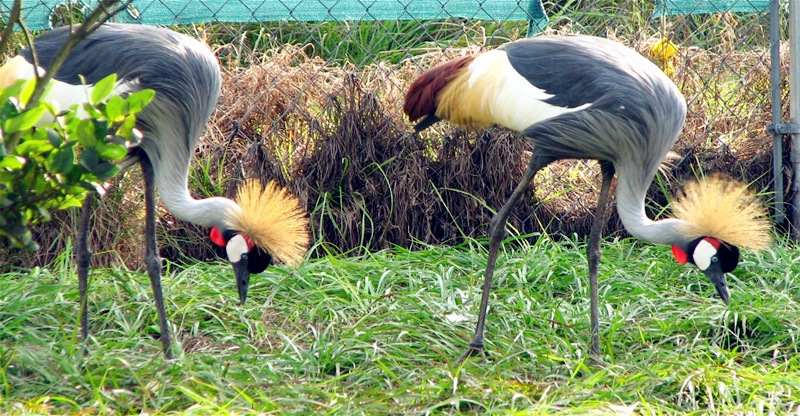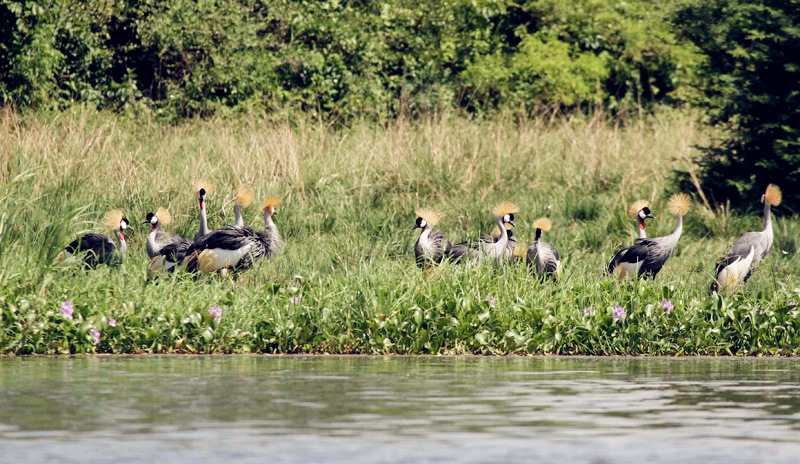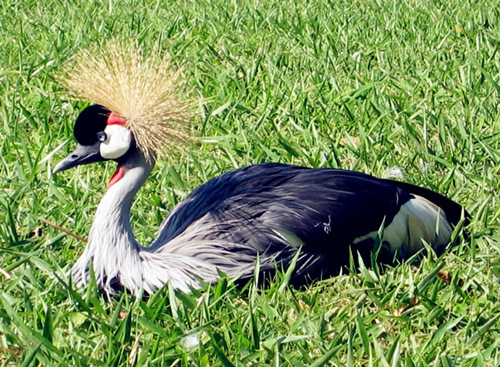By Sibasi Timothy, Feature Writer based in Kampala, Uganda
The Grey Crowned Crested Crane is the national bird of Uganda, which occupies a prime position on the national flag and coat of arms.
A count of 15 Grey Crowned Cranes thrive in the world, including the African Continent. Africa is endowed with two species that include: the East African Crested Crane, also referred to as Balearica regulorum giberriceps, thriving in Uganda, Tanzania, Kenya Rwanda, Burundi, Democratic Republic of Congo, Mozambique, and the South African specie which thrives in Zimbabwe and South Africa. These two types of Grey Crowned Cranes are closely related to the black crowned crane.

The population of the Grey Crowned Cranes bird species has been drastically reduced over the last four decades in Uganda. In 1962, the Grey Crowned Crested Cranes in Uganda were estimated at around 100,000, but has dropped to a range of 10,000-20,000, according to the Nature Uganda and Ministry of Tourism, Wildlife and Antiquities. A considerable decline has been recorded in the East African Sub species.
"These species have for example reduced from 35,000 to a range of 20,000-25,000 in Kenya in the three decades while less than 1,000 crested cranes thriving in each of the remaining East African nations of Burundi, Rwanda, and Tanzania. As a result of this trend, the International Union of Conservationists of Nature (IUCN) was prompted to include Grey Crowned Cranes on the endangered species list in 2012," said Paul Mafabi, director of Environmental Affairs at Uganda's ministry of Water and Environment.
Their survival is affected mainly by habitat destruction, due to drainage system, human activities, which include over overgrazing, using pesticides that pollute the water and vegetation they feed on.
Cranes feed on grass, seeds, frogs, insects, small toads along with other invertebrates, which are common in wetlands, river banks, open grass land, and around dams.
The species have unique nesting patterns as they usually return to the same spot annually and thus any destruction to such places would impact their breeding patterns.

Grey Crowned Crested Cranes at the showers of River Life in Jinja. (Photo by Sibasi Timothy )
Prof. Ephraim Kamuntu is a retired Zoologist at Makerere University who believes its diminishing population have resulted from conflicts with humans over crop damage, capture for pets, their monogamous nature in which they pair once and any loss of partner marks the end of breeding and failure to breed in captivity.
In addition to being listed as an endangered Grey Crowned Crested Cranes species in Uganda, Dianah Nalwanga the Programes Director at Nature Uganda said several other efforts are also in place to ensure their survival.
"Nature Uganda intends to gather UGX 1.2 Billion over a spread of five years for Grey Crowned Cranes habitation and conservation," said Nalwanga.
The Grey Crowned Crested Cranes are only found in dry regions, but still choose wetter habitats for nesting. They are commonly found in the dry Savannah regions of Africa in the south of the Sahara desert, in countries like the DR. Congo, Uganda, Kenya, the eastern and southern parts of South Africa and in south of Angola.
A Grey Crowned Crane measures about one meter tall, with a body weight of about 3-4 kg. They have a large wingspan, measuring between 180cm to 200cm wide. They have fairly short beaks with long legs to wade through the tall grass. They are grey and black in color and the feet are large enough to help them balance. They also make a unique honking sound, which is different from trumpeting made by other crane species. In terms of sex, they appear similar, but you can differentiate them by size - males are larger than females.

An East African Grey Crowned Crested Crane resting on the green vegetation at Uganda Wildlife Education Center (UWEC) in Entebbe. (Photo by Sibasi Timothy)
The birds can be seen walking as couples, because they mate for a lifetime. A pair will define their own territory and can be very aggressive to defend it. They are found on land in trees and that applies to the east African crested crane species and South African crowned crane respectively.
They mature at 3 years and breed all year round, but normally between December to February as they respond to changes in the weather from the dry to rainy seasons. They are monogamous and attract a mate by dancing, bowing and jumping.
They lay 2-5 eggs that they keep in nests, which are built on a flat and circular platform using grass and available plants like the reeds. In each nest they leave 2-3 eggs. They frequently use ground nests that were abandoned by other birds.
(The opinions expressed here do not necessarily reflect the opinions of Panview or CCTV.com. )

Panview offers a new window of understanding the world as well as China through the views, opinions, and analysis of experts. We also welcome outside submissions, so feel free to send in your own editorials to "panview@vip.cntv.cn" for consideration.
















